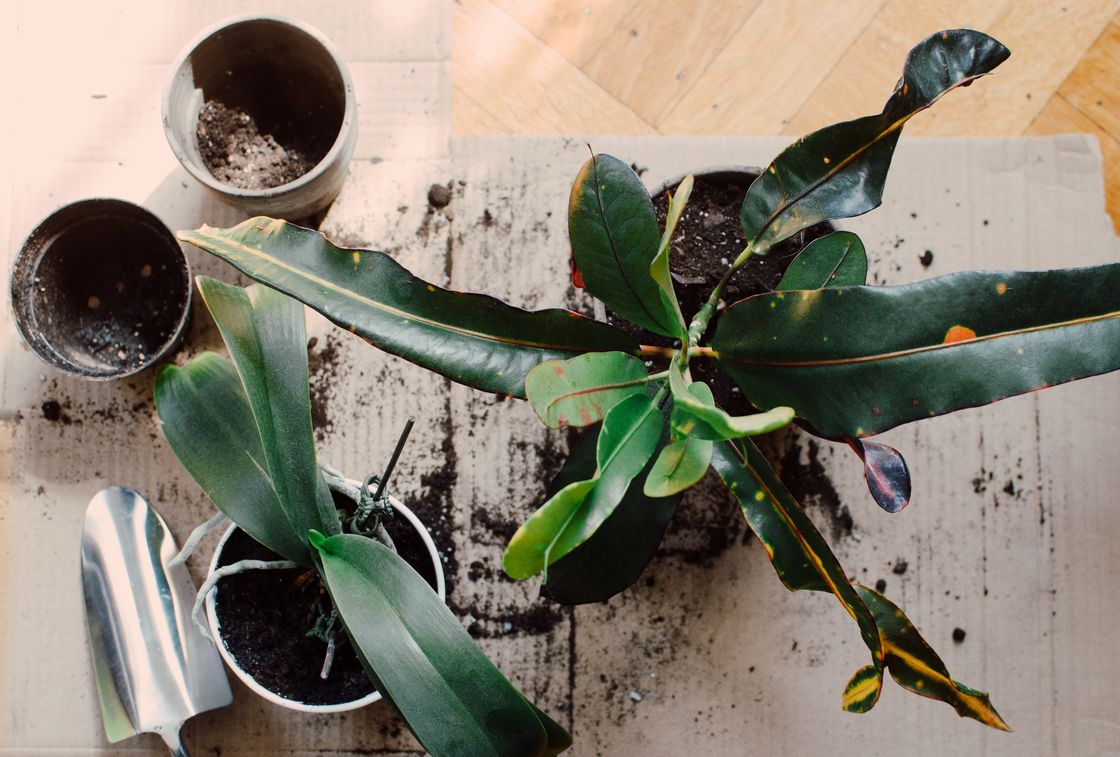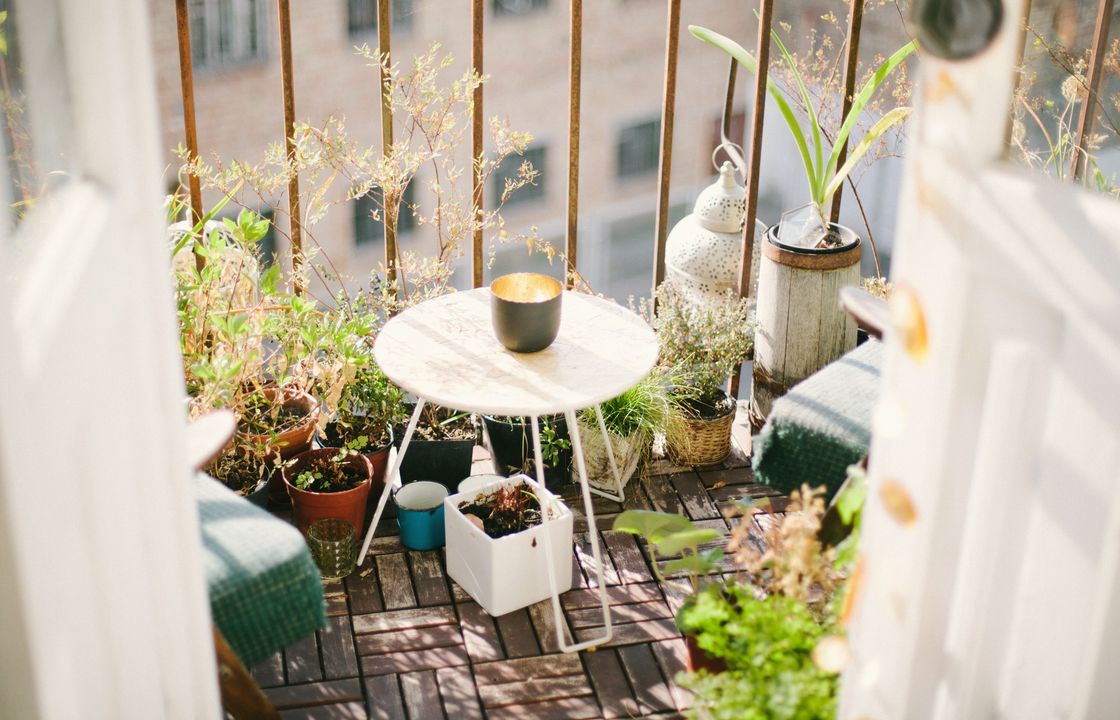Index
1. How to best manage the space available for your vegetable garden
Organization, lighting and creativity are the ingredients that you must carefully mix when you start wondering how to make a small vegetable garden on the balcony. If you have limited space, there's no alternative: you need to optimize the space on your terrace. A potted vegetable garden is one option, but not the only one. Consider decorating the entire exterior wall with a vertical vegetable garden and hang a few planters on the railing to reduce obstructions in the floor space. Alternatively, nothing beats a large shelf, covered with a sheet during the colder months to create a practical home greenhouse.
In terms of design, you have the opportunity to have fun with creative recycling, as long as it doesn't clash with the interior design style. With the elegant and welcoming atmosphere typical of shabby chic, wooden pallets, objects forgotten in the attic, and vintage vases shine again as DIY containers for your terrace garden.
The success or failure of your crops depends more than anything on proper sun exposure. When creating your balcony gardening plan, in fact, one of the first things to take into consideration is the amount of direct sunlight your space receives, and choosing the plants to grow based on that as well. Also keep in mind that the sun can shift throughout the year, especially in the winter months. Light is essential, but too much can actually be harmful. Keep this in mind when deciding when and how much to water, as well as what to plant on your balcony. Some plants need more direct sunlight than others. In the unfortunate event that it is impossible to create a vegetable garden on the balcony, do not despair: there are splendid indoor plants that require little light and they are just waiting for you.

2. Pots for a vegetable garden on the balcony: which ones to choose?
If you have a sufficiently large terrace or if you want to furnish a garden on a budget, planting your vegetable garden in pots is the easiest and most economical solution. Don't be confused by the huge variety of containers on the market: choosing the right size is quite simple. Imagine each plant at its maximum height: the more you want it to grow and develop without feeling caged in, the deeper the pot should be. If you're trying to figure out how to create a small vegetable garden on the balcony, it's important to choose plant varieties that won't grow too large. Since balcony gardening is becoming very popular, many seed labels or packets include a note or symbol indicating whether the variety is suitable for pots.
If ground space is limited, you can choose plants that take up space on the wall: simply use a trellis to help them grow vertically. Some plants that also grow well vertically? Peas, beans, or cucumbers are the most popular.
The material of the pots also makes a difference. Plastic pots and saucers are cheap, but terracotta is the best investment. Thanks to its properties, it promotes transpiration of the soil, creating the ideal temperature for growing your vegetables. In the long run, terracotta could prove to be the winning choice.
3. What type of soil to use
Personal taste often has the final say with pots; the choice of soil, however, should follow objective criteria. Creating a favorable habitat is the foundation if you're wondering how to create a balcony garden that consistently produces fruit. Good soil is well-draining, well-fertilized, and stays soft and moist even after a few hours in the sun.
In this case, we don't recommend DIY solutions. Perfectly blending sand and clay—essential for draining water—with inorganic components and nutrients is complex. The universal soil you find on the market, however, already combines the elements needed to grow thriving plants. Many soils also contain fertilizer or other forms of plant nutrition. It can be compost or other organic materials, or slow-release fertilizer pellets: ideal for growing vegetables.
One last precaution: fill the bottom of the pots with expanded clay or gravel and you will also avoid the danger of water stagnation.

4. Balcony Garden: What's Best to Plant?
Lack of space is the only limit that can dictate what you sow and grow on your balcony. Some plants – such as cucurbits – need deep roots to grow, so it's best to avoid pumpkins, melons, and watermelons: even if planted in large, capacious pots, they would struggle to develop. Similarly, courgettes and cucumbers can be challenging, but if the size of your terrace allows, why not give it a try? We trust in your ability with a rake and watering can! Furthermore, as we've seen, cucumbers can also be grown vertically: with a little effort, you can grow them vertically. With a little effort, you can grow them even in a small space!
As we said at the beginning, aromatic plants are essential on the balcony: they perfume the house with the aromas of nature, are excellent against insect infestations and can be transformed into local condiments. If you're wondering what to grow on your balcony, especially if it's small, aromatic plants are one of the most popular choices. Not only for their use and scents: they are also decorative and beautiful to look at. A pot of mint and basil is a must-have on the balcony of every expert cook!
Even the smallest vegetables, legumes and berries take root without a hitch. In addition to onions and garlic – which require little care – colorful tomatoes, blueberries, strawberries, chili peppers, and lettuce are also ideal for a home nursery.
5. How to take care of your vegetable garden
With a little elbow grease and attention, caring for your little green friends can take little time. Weeding and light pruning are everyday tasks; those who know a thing or two about gardening, however, stand out when it's time to water.
Avoid the hottest hours and only turn on the taps in the early morning or after sunset. You already know that plants should never be left dry, but neither should they drown: give them water little and consistently. The ideal system is drip irrigation, because excessively wet soil leads to waterlogging, which risks rotting your plants and ruining your efforts. The solution? Always use saucers and test the soil to see if it's still moist or needs watering. Trying to maintain a constant soil moisture level is essential: never let the pots dry out completely and then fill them with water. Drastic changes in soil moisture can cause many problems for the health of your plants or the quality and flavor of the final product.
Now that you know how to create a DIY balcony garden, how about starting your own little urban farm? On the Casavo's classifieds platform, hundreds of houses with terraces await you to get you started.






